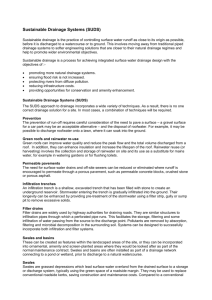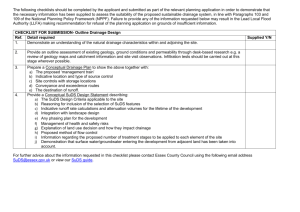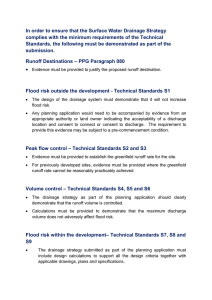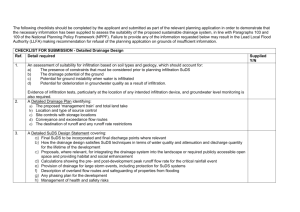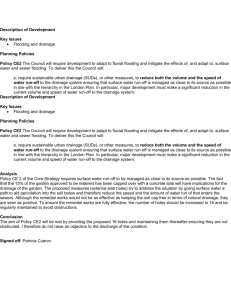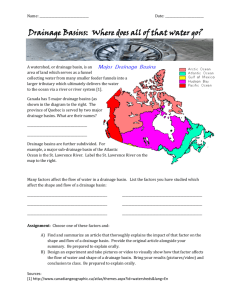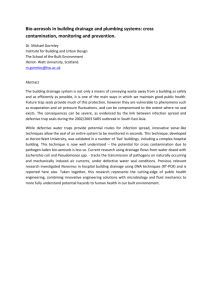Sustainable Drainage Systems (SUDS)
advertisement
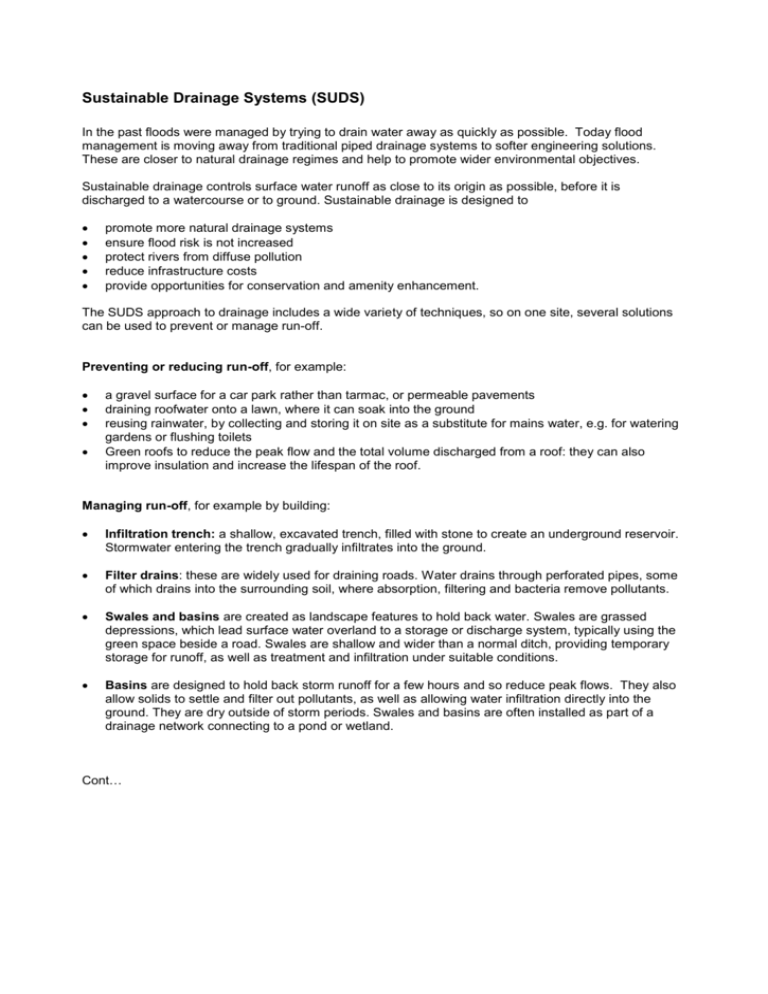
Sustainable Drainage Systems (SUDS) In the past floods were managed by trying to drain water away as quickly as possible. Today flood management is moving away from traditional piped drainage systems to softer engineering solutions. These are closer to natural drainage regimes and help to promote wider environmental objectives. Sustainable drainage controls surface water runoff as close to its origin as possible, before it is discharged to a watercourse or to ground. Sustainable drainage is designed to promote more natural drainage systems ensure flood risk is not increased protect rivers from diffuse pollution reduce infrastructure costs provide opportunities for conservation and amenity enhancement. The SUDS approach to drainage includes a wide variety of techniques, so on one site, several solutions can be used to prevent or manage run-off. Preventing or reducing run-off, for example: a gravel surface for a car park rather than tarmac, or permeable pavements draining roofwater onto a lawn, where it can soak into the ground reusing rainwater, by collecting and storing it on site as a substitute for mains water, e.g. for watering gardens or flushing toilets Green roofs to reduce the peak flow and the total volume discharged from a roof: they can also improve insulation and increase the lifespan of the roof. Managing run-off, for example by building: Infiltration trench: a shallow, excavated trench, filled with stone to create an underground reservoir. Stormwater entering the trench gradually infiltrates into the ground. Filter drains: these are widely used for draining roads. Water drains through perforated pipes, some of which drains into the surrounding soil, where absorption, filtering and bacteria remove pollutants. Swales and basins are created as landscape features to hold back water. Swales are grassed depressions, which lead surface water overland to a storage or discharge system, typically using the green space beside a road. Swales are shallow and wider than a normal ditch, providing temporary storage for runoff, as well as treatment and infiltration under suitable conditions. Basins are designed to hold back storm runoff for a few hours and so reduce peak flows. They also allow solids to settle and filter out pollutants, as well as allowing water infiltration directly into the ground. They are dry outside of storm periods. Swales and basins are often installed as part of a drainage network connecting to a pond or wetland. Cont… © Geoff Gibbs, Environment Agency. Bramley Green is a mixed residential development of about 600 homes located in Angmering, West Sussex. Sustainable drainage for the site includes a new pond (foreground), a flood storage area and an under-drained infiltration area within a public open space. (Adapted from Environment Agency website, 2007).


